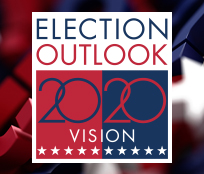The 2020 pre-election rollercoaster ride is not over by any stretch of the imagination. Markets have been buffeted once again by another black swan event—this time, the breaking news that President Trump has tested positive for COVID-19. While it is too early to know how this will impact the functioning of the US government going forward, the timing of this development has immediate wide-ranging ramifications across a number of critical fronts: the near-term direction of global financial markets and its impact on the budding US recovery, the domestic political landscape in light of the upcoming US presidential elections, and East-West geopolitical dynamics as allies and adversaries consider their next steps of engagement with the US during this sensitive time.
Given almost zero visibility on possible outcomes, we expect risk assets to be negatively impacted as we move into the weekend, with a bias to US government securities and the US dollar. How deep the correction goes and how long it lasts will depend on the amount of transparency we receive around President Trump’s health condition and other unknowns. But it is important to bear in mind that the US Federal Reserve and central banks globally have been operating with an “emergency” mindset for the better part of the year and will be ready to use their updated arsenal of tools (e.g., the Fed’s primary and secondary market credit facilities) to support market functioning and restore market stability, as needed.
That stated, the US election picture has become even more muddled. In a recent special US Elections 2020 report, we noted that the recent passing of US Supreme Court Justice Ruth Bader Ginsburg and the process of confirming her replacement added another dimension of uncertainty to the political landscape and stalled the momentum of a critical US fiscal deal ahead of the election. Should President Trump become incapacitated and/or should other high-ranking members in the Trump Administration also test positive for the coronavirus—note that the virus has a 14-day incubation period—it could introduce even greater uncertainty around the transition of power through year-end. This, in turn, may invite more external interference in the US electoral process (either in the form of cyberattacks or an escalation in the ongoing disinformation campaign) or invite saber-rattling from adversaries such as Russia or North Korea looking to provoke US allies and alliances (and of course, global financial markets) during this period of perceived US vulnerability.
Once again, unanticipated events such as this underscore the importance for investors to be as diversified as possible in their broad investment portfolios and to embrace the value of fixed-income as a key diversifier in periods of sudden broad market volatility. Now that the proverbial “October surprise” has manifested itself, we expect markets to remain hostage to headline risk over the coming days. As always, we aim to position our portfolios to withstand further market volatility and remain flexible enough to capture value opportunities as they appear.



